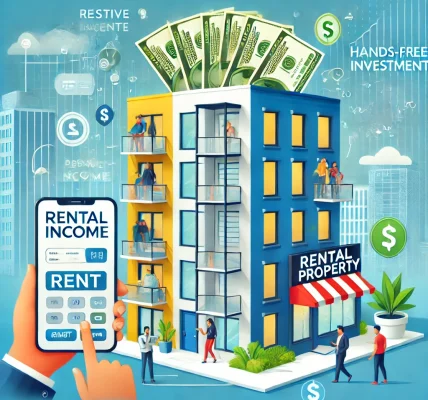Introduction
House flipping—buying, renovating, and selling properties for profit—remains one of the most lucrative real estate investment strategies. However, success in 2025 requires a strategic approach due to shifting market trends, evolving regulations, and rising material costs. This DIY guide provides a step-by-step blueprint for beginners to maximize profits while staying legally compliant.
Step 1: Understanding the House Flipping Business
What is House Flipping?
House flipping involves purchasing undervalued properties, making strategic renovations, and selling them for a profit. The key to success lies in:
- Finding properties at a discount
- Accurately estimating renovation costs
- Selling quickly at a competitive price
Benefits of House Flipping
- High Profit Potential: Skilled investors can generate substantial returns.
- Short-Term Investment: Profits are realized faster than with traditional rental properties.
- Market Flexibility: Adaptable to different economic conditions.
Challenges of House Flipping
- High Initial Costs: Requires capital for purchase and renovations.
- Market Fluctuations: Property values can be unpredictable.
- Renovation Delays: Construction issues or permit delays can impact profits.
Step 2: Researching the 2025 Real Estate Market
Key Market Trends in 2025
- Rising Interest Rates: Mortgage rates may impact buyer demand.
- Remote Work Influence: Suburban and secondary markets continue to attract buyers.
- Sustainability Demand: Energy-efficient upgrades increase property appeal.
Best Locations for House Flipping
- Cities with strong job growth and infrastructure development.
- Areas with high rental demand to attract investor-buyers.
- Neighborhoods experiencing gentrification or urban revitalization.
Step 3: Finding the Right Property
How to Identify Profitable Properties
- Foreclosures & Short Sales: Banks sell distressed properties below market value.
- Auction Properties: Real estate auctions offer deeply discounted homes.
- Off-Market Deals: Direct seller negotiations can lead to better pricing.
- MLS & Online Listings: Regularly monitor listings for undervalued properties.
The 70% Rule for House Flipping
To calculate a profitable deal:
- Maximum Purchase Price = (After Repair Value × 70%) – Renovation Costs
- This ensures a 30% profit margin, covering expenses and unforeseen costs.
Step 4: Financing Your Flip
Funding Options for House Flippers
- Cash Purchase: Avoids interest costs but ties up capital.
- Hard Money Loans: Short-term loans with quick approvals but high interest.
- Conventional Loans: Suitable for buyers with strong credit.
- Private Investors: Partnering with investors to share costs and profits.
- Home Equity Line of Credit (HELOC): Using existing real estate equity for financing.
Step 5: Budgeting and Cost Estimation
Common House Flipping Costs
- Purchase Price: Cost of acquiring the property.
- Renovation Costs: Materials, labor, and permits.
- Holding Costs: Property taxes, insurance, and utilities.
- Selling Costs: Realtor commissions, marketing, and staging.
Renovation Budgeting Tips
- Get multiple contractor bids for accurate pricing.
- Prioritize high-ROI improvements (kitchen, bathrooms, curb appeal).
- Set aside 10-20% of the budget for unexpected costs.
Step 6: Renovating for Maximum Value
High-ROI Renovations in 2025
- Energy-Efficient Upgrades: Smart thermostats, solar panels, LED lighting.
- Modern Kitchens: Quartz countertops, stainless steel appliances, open-concept layouts.
- Bathroom Upgrades: Walk-in showers, floating vanities, luxury tile.
- Smart Home Features: Security systems, voice-activated lighting, smart locks.
- Curb Appeal Improvements: Landscaping, fresh exterior paint, updated doors/windows.
DIY vs. Hiring Contractors
- DIY: Small tasks like painting, landscaping, and minor repairs.
- Contractors: Structural work, plumbing, electrical, and roofing.
Step 7: Selling Your Flipped House
Pricing Strategies
- Analyze comparable sales (comps) in the area.
- Avoid overpricing, which can lead to longer holding costs.
Marketing Your Property
- Professional staging to enhance visual appeal.
- High-quality photography and virtual tours.
- Listing on MLS, Zillow, Realtor.com, and social media platforms.
Working with Real Estate Agents
- An experienced agent helps with pricing, negotiation, and closing deals quickly.
Step 8: Legal Considerations and Risk Management
Complying with Real Estate Laws
- Permits & Zoning: Ensure renovations comply with local codes.
- Fair Housing Laws: Avoid discriminatory practices when selling.
- Contractor Agreements: Use clear, written contracts for renovations.
Managing Financial Risks
- Insurance Coverage: Property and liability insurance for protection.
- Exit Strategy: Have a backup plan if the market shifts unexpectedly.
- Tax Implications: Capital gains taxes may apply, but 1031 exchanges can defer taxes.
Conclusion
House flipping in 2025 offers lucrative opportunities for beginners who plan strategically. By selecting the right properties, budgeting efficiently, implementing high-value renovations, and navigating legal considerations, investors can maximize profits and minimize risks.
With a disciplined approach, house flipping can be a rewarding and profitable venture, setting the foundation for long-term financial success in real estate.




